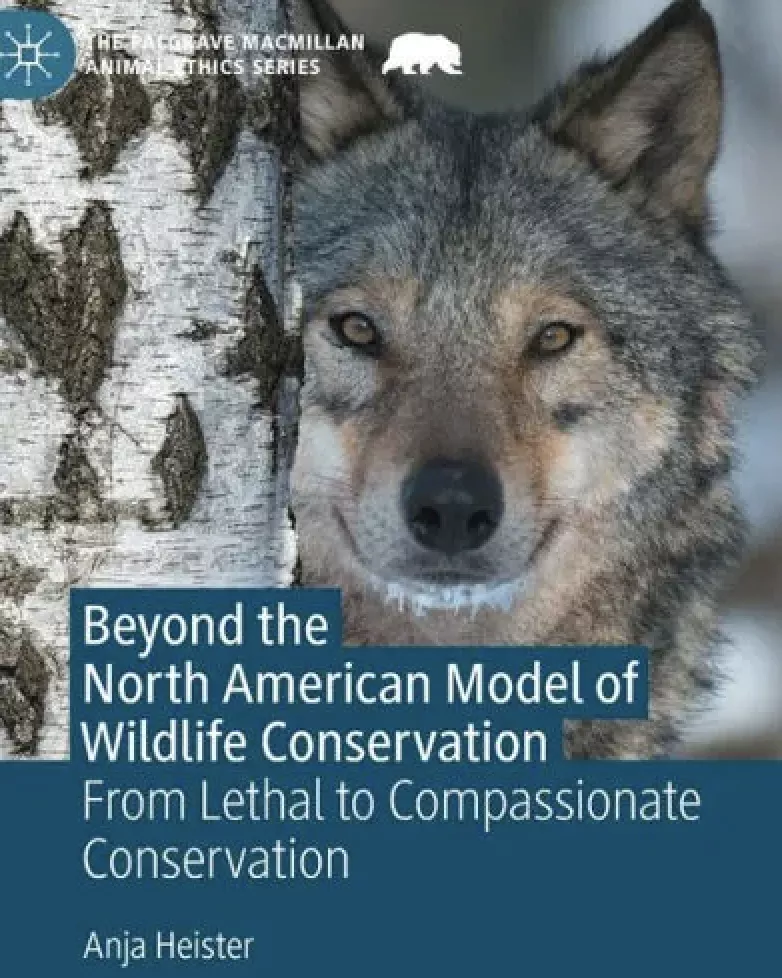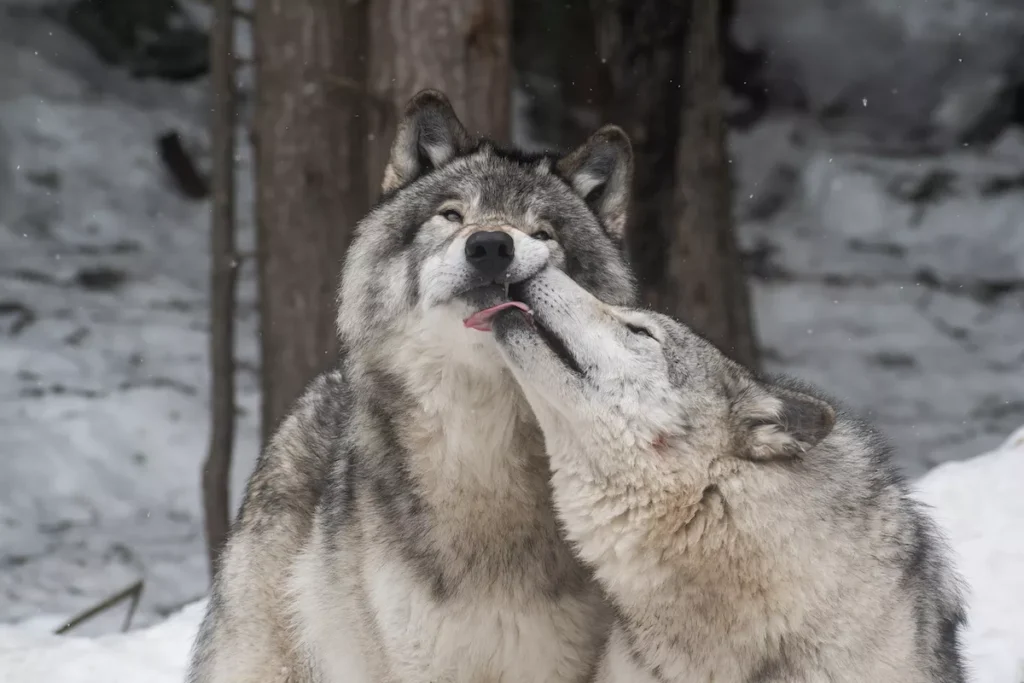In most states, wild wolves continue to be treated as gang members of the wilderness — as a scourge of the landscape, marauders of livestock, and menaces of the cash cows (elk and deer) of the modern hunting and trapping establishment.
Idaho allows wolves to be shot from helicopters and ATVs; Montana hunters and trappers wiped out a large portion of Yellowstone National Park’s wolves; Wisconsin blessed an early 2021 season with hunters killing more than 200 wolves inside its borders within three days. Animal Wellness Action and its allies, including the Center for a Humane Economy, prevailed in the courts to block a continuing assault in Wisconsin, which had allowed hunters use dogs to attack the wolves before shooting them.
This is barbarism and scorched-earth behavior masquerading as wildlife management.
Wolf advocates are distressed as the body count surges, as wolf families lose brothers and sisters and moms and dads and as pups are even killed inside their dens. A growing set of independent science reports suggests that hunting culture, which favors slaughtering predators, undermines ecosystem health and nature’s resiliency already stressed by climate threats and crisis-level biodiversity losses. Advances in ethology demonstrate that animals are sentient beings, terrorized by guns, arrows, traps, and packs of trained dogs loosed to attack them.
How did we get here? In her new book, “Beyond the North American Model of Wildlife Conservation: From Lethal to Compassionate Conservation” (Palgrave Macmillan, 2022), Anja Heister, Ph. D., explains that the zealous hunting of wolves is one strong example of how animals are being wrongly treated today because of a century-old anthropocentric paradigm called the North American Model for wildlife conservation. (Listen here to the Animal Wellness Podcast interview of Heister with host Joseph Grove and Julie Marshall.)
As a German-born wildlife advocate living in Missoula, Montana, Heister was curious about the NAM and wanted to learn how we ended up with policies and actions on the ground to support hunting, fishing, and trapping animals for human use and entertainment, as well as to destroy maligned predators.
What she came up with is a fascinating, rich and detailed history showing the NAM’s lethal wildlife conservation model has only fortified and sadly failed to evolve alongside modern science with growing public sentiment that there exists intrinsic value of wolves and all wild animals beyond killing.
The North American Model
Heister addresses the seven elements of the North American Model:
- Wildlife resources were to be considered a public trust.
- Markets for game/wildlife were to be eliminated.
- Allocation of wildlife should be by law.
- Wildlife can be killed only for legitimate purposes.
- Wildlife should be considered an international resource.
- Science is the proper tool to discharge wildlife policy.
- Democracy of hunting is standard.
These non-legal and non-binding elements can be traced back 150 years, when a group of influential and wealthy sportsmen led by Theodore Roosevelt started to organize in response to the serious decline of game species — including white-tailed deer and elk — caused in large part by market overhunting and excessive trapping.
In 1897, they founded the Boone and Crockett Club, a trophy hunting organization in Missoula, Montana, and began planting the seeds for a new system called “conservation” that would allow for “using” wildlife with government regulations, defined by sport hunting ethics such as “fair chase” and guided by the best available science.
Today, the NAM is widely touted by Safari Club International with its state chapters, as well as U.S. Fish and Wildlife, and virtually every state wildlife agency in the country, as it “provides for and directs the proper use and management of these resources (wildlife),” according to the Boone and Crockett Club’s web site.
Beyond these pro-hunting or pro-angler groups sits a “Conservation-Industrial Complex,” Heister explains, which promotes the “need” for lethal conservation practices. This complex wields tremendous power and influence at the highest levels of state and federal government, and includes pro-gun lobbyists, politicians, and wildlife agencies.
Heister’s book has the potential to open the eyes and change the hearts of readers who hunt yet prioritize the health and resiliency of complex ecosystems over access to a recreational lethal sport. And as an independent researcher, Heister deserves much credit for having the courage to question a seemingly antiquated system designed with such narrow focus. She opens the door for readers to think critically about established orthodoxies.
The Need for Critical Thinking and Compassion
Heister’s research and critical analysis encourage us to ask whether the North American Model holds up as best practices today, given modern advances in ethology about the sentience of individual animals when the NAM paradigm only sees wildlife as certain important species and at population levels. This model does indeed fall short when held up to advances in wildlife behavior science that show killing random individual wolves, for example, undoubtedly can cause an impact on populations, because wolves are highly social, with key roles in the pack.
As cruelty of hunts under the NAM model continue, new generations seem to be pushing back. In 2021, for instance, when federal agents purposefully killed eight pups from a Washington state wolf pack that was being studied by a local school for nearly two decades, those students weren’t afraid to speak out for the innocent young wolves and write letters to President Joe Biden.
Element No. 6 of the NAM — science is the proper tool to discharge wildlife policy — is perhaps the most critique-worthy principle today. Under the NAM paradigm, wildlife agency science is centered on studies to benefit or boost hunting interests, while independent peer-reviewed, academic science is largely ignored or dismissed, especially if it doesn’t promote the pro-hunting paradigm.
A good example across the board has been numerous studies that look at whether killing more predators will boost populations of deer or elk, a favorite target among sport hunters. Readers may have serious questions about priorities of science within “captured” agencies that fail to address our current biodiversity crisis and loss of nongame species on the planet, as well as fragmentation of habitat and climate change all affecting our wildlands and wild animals.
She makes sense in questioning the trapping of wildlife today — when there is nothing sporting or fair about setting a trap — since we have synthetic materials to keep warm that don’t involve killing animals.
Heister’s work should be added to curricula for students of wildlife management as well as history, as it has the ability to add richness and depth to our shared knowledge and will teach critical thinking rather than the blind following of the NAM.
It is empowering, for instance, to learn that in the beginning era of NAM, there were women conservationists, including a woman named Rosalie Barrow Edge (1877-1962), who was leading voice for protecting all wildlife. She established the first reserve for raptors called Hawk Mountain Sanctuary, which helped Rachel Carson (author of “Silent Spring”) discover the decline of juvenile raptors from DDT.
Also left out in conversations among proponents of the NAM paradigm are the many environmental and animal welfare organizations that deserve much credit for wildlife protection work that gave us the Endangered Species Act, the Clean Water Act, and the Migratory Bird Treaty Act.
All of this adds up to Heister’s main point, which is that the NAM has likely dominated the conversation for far too long.
It’s high time to take a more serious look at the commercialized, anti-predator, game-species centered operations of the wildlife management profession. It is not only possible, but essential, that we welcome in the new paradigm grounded on the notion that intact ecosystem services, with a compassionate assist from humans, provide us with the best model of sustainable wildlife policy. Heister offers readers hope, and it’s a good bet that by the end of the book, they will start taking a greater interest in wildlife policy where they live in order for what she envisions as a compassionate revolution to take hold.

Quotes from Dr. Heister’s book
“Most people oppose killing and harming animals for frivolous purposes such as trophy hunting and trapping for fur and profit, but they have little knowledge of the North American Model. I hope my book can raise awareness of the injustices committed against wild animals.”
“We must all act on the behalf of animals with great courage and actions that change systems and institutions that profit from exploiting and killing animals. It is time for us to think and feel about lives beyond our own species.”
“I hope my book will empower readers to speak up on behalf of wild animals and demand policy changes grounded in respect and compassion, not killing for fun.”
